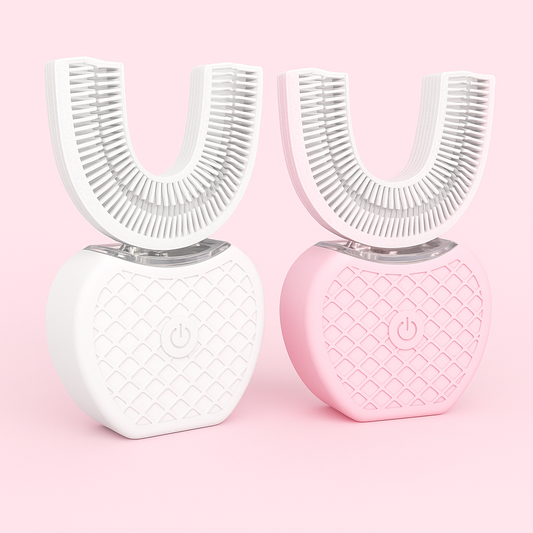Introduction
In 2025, the pursuit of optimal oral health continues to evolve as consumers become more knowledgeable and discerning about the products they incorporate into their daily routines. Toothpaste is no longer just a simple hygiene product but a carefully formulated solution designed to tackle multiple oral health concerns. Among the ingredients that have stood the test of time and science are fluoride and xylitol. Both are powerful agents on their own, but combined in a toothpaste formulation, they provide a comprehensive defense against tooth decay, gum disease, and other common dental issues.
This article delves deep into the science behind fluoride and xylitol, their benefits, why their combination is particularly advantageous, and how to choose the best toothpaste in 2025 that harnesses these ingredients for a brighter, healthier smile.
The Science and Benefits of Fluoride
Fluoride has been a foundational element in dental care for over 70 years. It is widely recognized and recommended by dental professionals worldwide for its ability to prevent cavities and strengthen teeth. But how exactly does fluoride work?
- Enamel Strengthening: Tooth enamel is the hard, outer layer protecting teeth. Fluoride aids in re-mineralizing enamel that has been weakened by acids produced by bacteria, effectively reversing early signs of tooth decay.
- Decay Prevention: By making enamel more acid-resistant, fluoride reduces the risk of cavities forming even after consuming sugary or acidic foods.
- Antibacterial Properties: Fluoride can inhibit the metabolic activity of decay-causing bacteria, reducing their ability to produce harmful acids.
In addition, fluoride's safety and effectiveness have been rigorously studied, leading organizations such as the American Dental Association (ADA) and World Health Organization (WHO) to endorse its use in toothpaste and water fluoridation programs.
Nevertheless, some individuals express concerns about fluoride exposure, especially in high doses, prompting a growing interest in complementary or alternative oral care ingredients.
Xylitol: Nature’s Sweet Protector of Teeth
Xylitol is a naturally occurring sugar alcohol found in many fruits and vegetables. It is widely used as a sweetener in sugar-free gums, candies, and increasingly, toothpaste. Unlike traditional sugars that feed harmful bacteria, xylitol starves them, leading to numerous oral health benefits:
- Reduction in Harmful Bacteria: Xylitol disrupts the energy production process of Streptococcus mutans, the primary bacteria responsible for tooth decay, reducing their numbers.
- Inhibition of Plaque Formation: By decreasing bacterial adhesion to tooth surfaces, xylitol helps prevent plaque buildup, a key factor in cavities and gum disease.
- Increased Saliva Flow: Xylitol stimulates saliva production, which is critical for washing away food particles, neutralizing acids, and providing minerals that aid enamel repair.
- Safe Sweetening Agent: It provides a pleasant taste without contributing to tooth decay, making oral care routines more enjoyable.
Scientific studies have consistently shown that regular xylitol use can reduce the incidence of cavities and improve overall dental health.
The Synergistic Power of Combining Fluoride and Xylitol
While fluoride and xylitol individually offer substantial benefits, their combination creates a powerful synergy that maximizes oral health protection through multiple mechanisms:
- Dual Action Against Decay: Fluoride accelerates enamel re-mineralization and increases acid resistance, while xylitol starves decay-causing bacteria and inhibits their growth.
- Enhanced Plaque Control: Xylitol reduces plaque buildup, allowing fluoride to more effectively penetrate and strengthen enamel without obstruction.
- Improved Salivary Environment: Xylitol’s stimulation of saliva production complements fluoride’s protective effects, maintaining a balanced oral pH and promoting natural repair processes.
- Better Breath and Gum Health: The antibacterial properties of both ingredients reduce the bacterial load responsible for bad breath and gum inflammation.
In combination, these ingredients address the root causes of many common oral health problems, providing comprehensive care that goes beyond surface-level cleaning.
What to Look for in Fluoride and Xylitol Toothpaste in 2025
With an increasing number of toothpaste options available, selecting the right product can be overwhelming. Here are essential factors to consider when choosing a fluoride and xylitol toothpaste:
- Optimal Fluoride Concentration: The ADA recommends fluoride levels between 1000 and 1500 parts per million (ppm) in toothpaste for effective cavity prevention. Avoid products with significantly lower concentrations as they may not provide full protection.
- Xylitol Percentage: Look for toothpaste containing at least 5% xylitol to ensure effective antibacterial activity and plaque reduction.
- Additional Natural Ingredients: Many modern toothpastes include herbal extracts (e.g., neem, green tea), vitamins (such as vitamin E), or whitening agents like niacinamide to enhance gum health and cosmetic appearance.
- Low Abrasiveness: To protect enamel, especially if whitening ingredients are present, choose toothpaste with a balanced abrasiveness rating (Relative Dentin Abrasivity, RDA) below 150.
- Certifications and Transparency: Trust brands that provide clear ingredient lists, have dental association endorsements, and adhere to environmentally-friendly manufacturing practices.
- Flavor and Texture Preferences: To encourage consistent use, select flavors and textures you enjoy. Xylitol naturally imparts a mild sweetness that many find pleasant without overpowering mint or artificial aftertastes.
Integrating Fluoride and Xylitol Toothpaste into a Holistic Oral Care Routine
Using a toothpaste combining fluoride and xylitol is one pillar of a successful oral care routine. To maximize benefits, consider these complementary practices:
- Brush Twice Daily Properly: Use a soft-bristled toothbrush and brush for at least two minutes each time, ensuring all tooth surfaces and the gumline are cleaned.
- Floss Daily: Flossing removes plaque and food debris from between teeth where toothbrushes cannot reach, reducing the risk of gum disease.
- Use Mouthwash Appropriately: Select an alcohol-free mouthwash with antibacterial properties to further reduce harmful oral bacteria.
- Maintain Regular Dental Visits: Professional cleanings and check-ups every six months help detect early problems and reinforce good habits.
- Mind Your Diet: Limit sugary snacks and acidic drinks that undermine enamel integrity. Incorporate tooth-friendly foods rich in calcium and phosphorus.
- Stay Hydrated: Adequate water intake supports saliva production and oral tissue health.
Top Brands and Products to Consider in 2025
Several toothpaste brands have emerged as leaders in combining fluoride and xylitol effectively. When shopping, look for those offering:
- Clinically tested formulas ensuring safety and efficacy.
- Natural ingredient blends that support oral health without harsh chemicals.
- Eco-conscious packaging reflecting a commitment to sustainability.
- Positive customer reviews and dental professional endorsements.
Some brands also provide enticing offers such as "Buy 2 Get 1 Free," free international shipping, and fast delivery, making it convenient to maintain your supply. Additionally, look for companies that prioritize secure payment systems and excellent customer service to enhance your shopping experience.
Addressing Common Concerns about Fluoride and Xylitol
Despite widespread acceptance, some frequently asked questions and concerns remain around these ingredients:
- Is fluoride safe? When used in appropriate amounts in toothpaste, fluoride is safe and highly effective. Overuse, especially in young children, can lead to dental fluorosis, so supervision is advised.
- Can xylitol cause digestive issues? In large quantities, xylitol can have a laxative effect, but the amount in toothpaste is minimal and safe for daily use.
- Are there fluoride-free options with xylitol? Yes, many consumers prefer fluoride-free toothpaste with xylitol, but combining both yields enhanced benefits.
- Is xylitol safe for pets? No, xylitol is toxic to dogs and should be kept out of their reach.
Final Thoughts: Embrace the Future of Oral Health in 2025
The combination of fluoride and xylitol in toothpaste represents a scientifically backed, effective approach to maintaining and improving oral health in 2025. By harnessing the strengths of both ingredients, you can protect your teeth from decay, promote gum health, and enjoy fresher breath with minimal risk.
Remember, selecting the right toothpaste is just one part of a comprehensive oral care strategy. Pair it with proper brushing, flossing, dietary mindfulness, and regular dental visits to achieve the radiant smile you deserve.
As awareness and demand grow, more innovative toothpaste formulations will continue to emerge, prioritizing natural ingredients and sustainability. Stay informed, choose trusted products, and invest in your oral health today for lasting benefits tomorrow.


